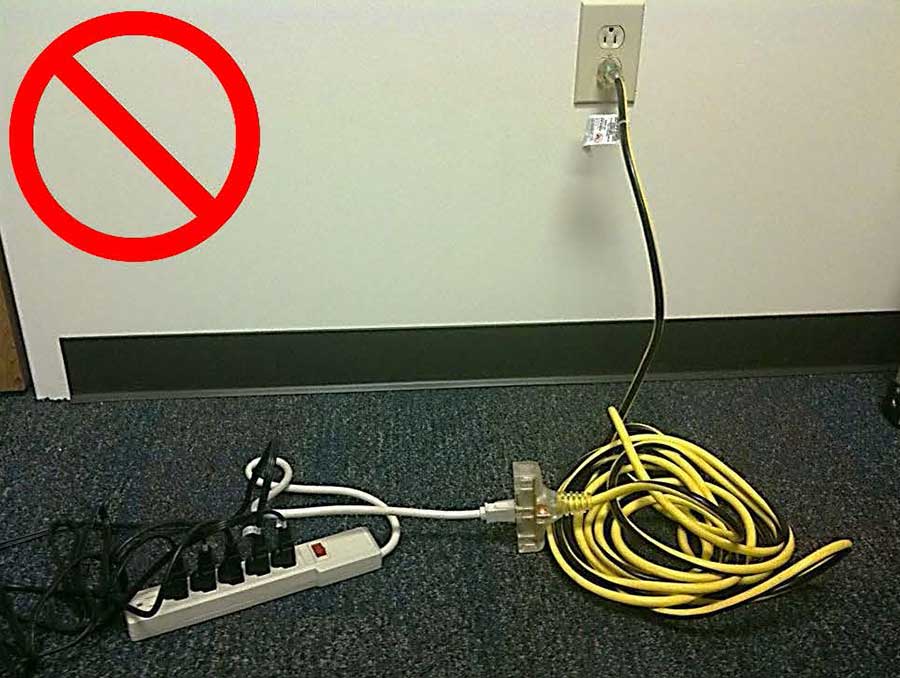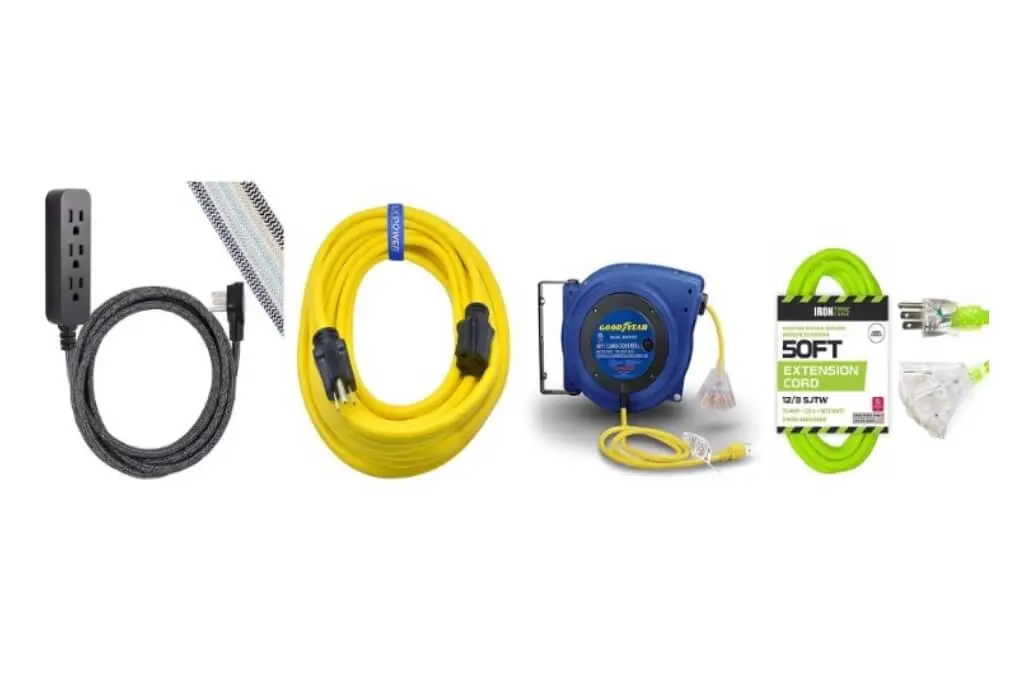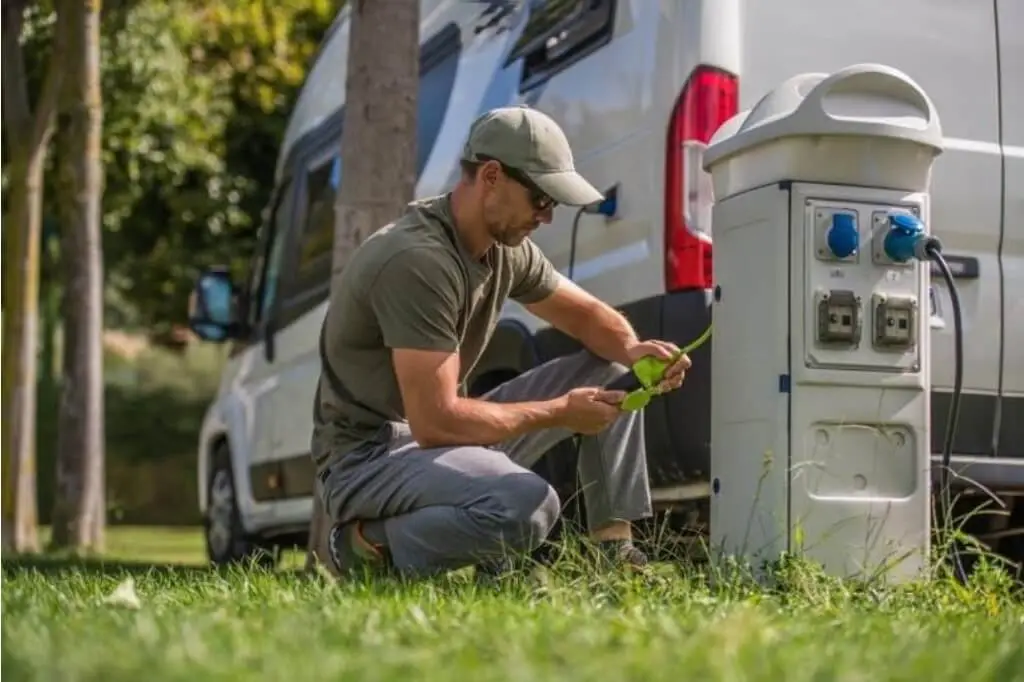Extension cords, when used correctly, offer a convenient solution to provide power to areas that are otherwise unreachable by a direct wall outlet. However, not all devices and appliances are suitable for connection via an extension cord. Understanding what should not be plugged into an extension cord is critical for maintaining home safety and preventing potential hazards. This includes high-power devices, large appliances, and any item that exceeds the safe load capacity of the cord. Misuse of extension cords can lead to overheating, fire hazards, and electrical failure, emphasizing the need for proper usage and adherence to manufacturer instructions.
The article will explore the importance of abiding by the ratings and specifications of extension cords to ensure a safe electrical environment within the home. It will highlight the risks associated with improper use, such as daisy-chaining extension cords and plugging inappropriate devices into them. Offering practical advice, the article will provide safer alternatives for long-term power solutions and share essential tips on how homeowners can utilize extension cords without compromising safety. Through informed practices and awareness, individuals can prevent the misuse of extension cords and protect their homes from electrical dangers.
Understanding Extension Cord Ratings and Specifications
Understanding the ratings and specifications of extension cords is pivotal for ensuring electrical safety in your home. These cords come with specific designations such as S, W, J, T, P, O, and E, each indicating their intended use and features. For instance, ‘W’ is for outdoor use, bearing a thicker insulation to withstand weather conditions, while ‘S’ is designated for general indoor use. Here’s a breakdown of what these designations mean:
- S: Flexible cords designed for general use
- W: Weather-resistant, suitable for outdoor applications
- J: Hard service cord with a standard 300-volt insulation
- T: Thermoplastic insulation
- P: Parallel wire construction for household appliances
- O: Oil-resistant outer jacket
- E: Thermoplastic elastomer (rubber-like) insulation
When selecting an extension cord, it’s essential to consider the cord’s length, gauge, and amperage limits. These factors directly influence the cord’s capacity to carry power efficiently and safely to your devices. Here’s a simple guide to help you choose the right extension cord:
Cord Length and Amperage Limits:
- Up to 25 feet: 16 gauge for 1-13 amps; suitable for light-duty applications
- 25-50 feet: 14 gauge for up to 20 amps; suitable for medium-duty applications
- Over 50 feet: 12 or 10 gauge for heavy-duty applications; ensures minimal voltage drop
Lower AWG number means a thicker wire and higher capacity. For instance, a 12-gauge wire can handle more amperage compared to a 16-gauge wire.
AWG Rating (American Wire Gauge):
Understanding the amperage (how much power a cord can handle) and ensuring it matches or exceeds the power needs of the device it powers is crucial. For high-amperage appliances, cords designed to carry 20 amps or more are recommended. Remember, the longer the cord, the higher the electrical resistance, which can decrease the power delivered to your device. This is why choosing the correct length and gauge based on the device’s amperage rating is critical.
Lastly, it’s important to use cords as per their intended use (indoor vs. outdoor) and to adhere to the maximum length guidelines to prevent overheating and potential fire hazards. For outdoor use, opt for cords with a ‘W’ designation, which have a thick, durable layer of protective insulation. Always ensure the extension cord is UL Approved and matches the equipment’s power requirements in terms of amperage and voltage ratings.
Common Electrical Items That Should Not Be Plugged into an Extension Cord
Certain electrical items pose significant risks when powered through extension cords or power strip, primarily due to their high power requirements or heating elements. Here’s a breakdown of devices that should be avoided and the reasons behind it:
Heating Devices:
- Space Heaters: Can cause fires due to high power consumption.
- Hair Dryers and Styling Tools: High wattage requirements increase the risk of overheating.
- Toasters and Crockpots: Similar to space heaters, the high energy draw can lead to fire hazards.Air Conditioners and Refrigerators: These can cause a voltage drop, leading to decreased performance or damage.
- Microwave Ovens: Like air conditioners, the power draw is too high for safe extension cord use.
Large Appliances:
- Water Heaters: Excessive heat and power draw make them unsuitable for extension cord use.
- Refrigerators: High power consumption can lead to voltage drops and potential damage.
- Fans: While not as high in power consumption, still pose a risk when used with thin or light-duty extension cords.
Miscellaneous:
- Surge Protectors: Plugging a surge protector into an extension cord can pose a fire hazard due to excessive heat.
- Electrical Engineer: Seeking professional advice from an electrical engineer can provide insights into safe electrical practices.
- Circuit Breakers: Understanding the role of circuit breakers in preventing electrical overloads is crucial for home safety.
For safely powering devices that shouldn’t be plugged into extension cords, consider the following alternatives:
- Direct Wall Outlet Connection: Always the safest option for high-power appliances and heating devices.
- Heavy-Duty Extension Cords: For temporary solutions, ensure the cord’s amperage rating matches or exceeds the device’s requirements.
- Professional Electrical Installation: For permanent solutions, adding more outlets where needed is a safer alternative.
Can you plug a power strip into an extension cord?
Plugging a power strip into an extension cord raises significant safety concerns due to the potential for overloading the electrical circuit. While it may seem convenient to extend the reach of a power strip using an extension cord, this practice can lead to excessive heat buildup and an increased risk of electrical fires. The combined load of multiple devices plugged into the power strip, along with the extended length of the extension cord, can surpass the cord’s capacity, causing it to overheat and potentially melt. Furthermore, daisy-chaining power strips and extension cords create a daisy-chain effect, compounding the risk of overloading and creating a hazardous situation. It’s crucial to always plug power strips directly into a wall outlet, ensuring that they’re not overloaded and can safely distribute power to connected devices.
Can you plug extension cords into each other?
The practice of plugging extension cords into each other, also known as daisy-chaining, is highly discouraged due to the increased risk of electrical hazards it poses. While it may seem like a convenient way to extend the reach of a single cord, daisy-chaining can lead to overloading circuits, overheating, and potential fire hazards. Each extension cord adds resistance to the circuit, which can result in voltage drops and increased electrical resistance. As a result, the cumulative load on the circuit may exceed its capacity, leading to overheating and possibly melting of the cords. Furthermore, daisy-chaining extension cords violate safety regulations and standards set by organizations like OSHA and the National Electrical Code. To ensure electrical safety, it’s essential to avoid daisy-chaining extension cords and instead use a single, appropriately sized cord that reaches the desired length without the need for additional extensions.
General Safety Extension Cord Use:
- Avoid Daisy-Chaining: Connecting multiple power strips or extension cords increases the risk of overloading and fire.
- Regular Inspection: Check cords for damage or wear and replace them when necessary.
- Proper Storage: Keep cords coiled and away from high-traffic areas to prevent damage.
- Understand Ratings: Only use cords that are suitable for the intended use, whether indoor or outdoor and that have the correct wire gauge for the appliance.
By adhering to these guidelines, homeowners can significantly reduce the risks associated with improper extension cord use, ensuring a safer living environment.
The Dangers of Daisy-Chaining Extension Cords
Daisy-chaining extension cords, or connecting multiple extension cords together, is a common but hazardous practice that can lead to several electrical safety issues. Here are the critical risks associated with daisy-chaining:
Overloading and Fire Hazards:
- Electrical Overload: Connecting an extension cord to another increases the risk of overloading the electrical system. This can cause the cords and the outlet to overheat, potentially leading to a fire.
- Increased Resistance and Heat: The total resistance in the circuit increases with the length of the cords, generating excess heat. This heat can damage the insulation of the cords, exposing wires and increasing the risk of electrical fires.
- Violations of Safety Regulations: Daisy-chaining extension cords are against OSHA regulations and the National Electrical Code. Such practices can lead to regulatory penalties and compromise safety. Risk of Electrocution: The longer the daisy-chained cords, the higher the risk of electrocution due to increased resistance and potential for insulation damage.
- Equipment Damage: Overloaded circuits can result in voltage drops, which can damage sensitive electronic devices connected to the daisy-chained cords.
Electrocution and Equipment Failure:
- Alternatives to Daisy-Chaining:
- Use Power Strips with Adequate Power Cords: Replace daisy chains with power strips that have a sufficient length of power cord and are designed to handle the intended load.Install Additional Outlets: If you find yourself relying on extension cords regularly, consider having a professional electrician install more outlets closer to where power is needed.
- Opt for Heavy-Duty Extension Cords: For temporary solutions, ensure to use a single, high-quality extension cord that matches or exceeds the device’s amperage requirements, avoiding the need to daisy-chain multiple cords.
By understanding the dangers associated with daisy-chaining extension cords and opting for safer alternatives, homeowners can significantly reduce the risks of electrical fires, equipment damage, and electrocution. It’s crucial to always follow manufacturer instructions and adhere to local electrical codes to ensure a safe electrical environment in your home.
Alternatives to Using an Extension Cord for Long-Term Power Solutions
For long-term power solutions in your home, relying solely on extension cords can pose significant safety risks. Here are some safer alternatives and practices to consider:
Power Strips with Over-Current Protection:
- Look for a power strip equipped with over-current protection to prevent overloading.
- Ensure they have an adequate cord length to allow for proper heat dissipation.
- Models with a built-in switch and circuit breaker offer an added layer of safety.
- The National Electrical Code advises installing outlets near areas where power is frequently needed. This reduces the risks associated with overloading, wear, and potential tripping hazards.
- Consider hiring a professional electrician to install new outlets for safe and long-term use.
Installation of New Power Outlets:
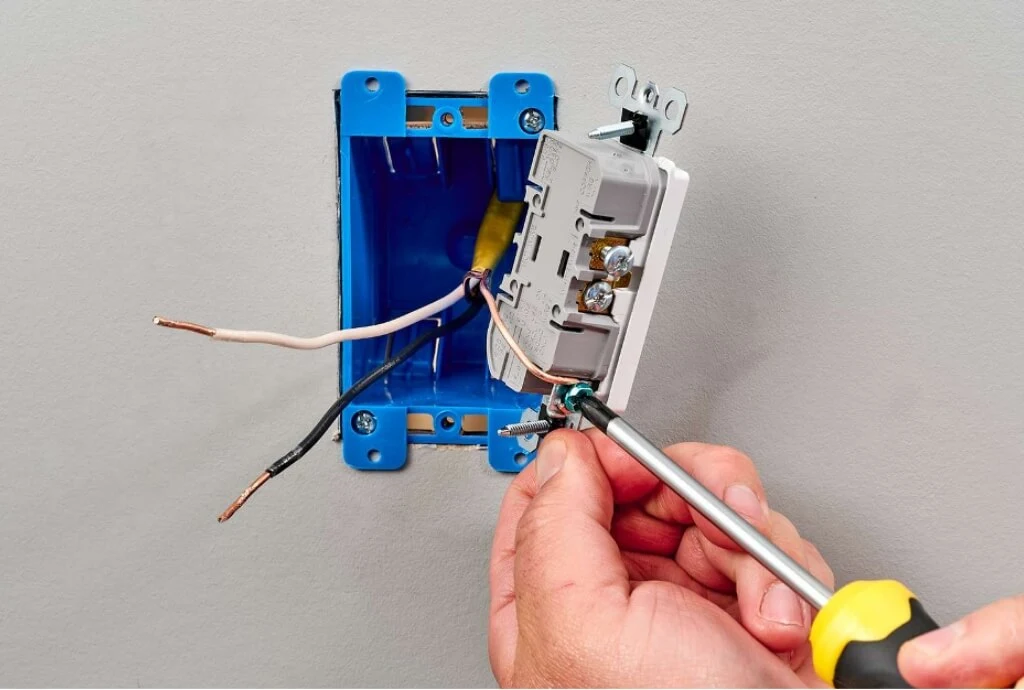
- Outlet Taps and Power Strips:
- Outlet Taps: These can be directly plugged into a wall outlet, providing additional receptacles. Some models include USB ports and surge protection, offering versatility without the need for long cords.
- Power Strips Varieties: Available in various shapes, sizes, and cord lengths (ranging from 2 feet to 25 feet), power strips can accommodate different spatial needs. Opt for those with a circuit breaker and surge protection for enhanced safety.
Important Considerations:
- Avoid Permanent Use of Extension Cords: Extension cords should not be used as a substitute for permanent wiring. OSHA regulations allow their use as temporary wiring for up to 90 days only.
- Regular Inspection: Both extension cords and multi-plug adapters should be regularly inspected for damage to ensure long-term safety.
- Understand the Limitations: Heavy reliance on extension cords often indicates the need for additional outlets. Avoid using extension cords for appliances that are far from an outlet; instead, consider more permanent solutions like additional outlets or rewiring.
By adhering to these guidelines and opting for safer alternatives, homeowners can ensure a safer electrical environment, mitigating the risks associated with improper use of extension cords.
Extension Cord Safety Tips for Homeowners
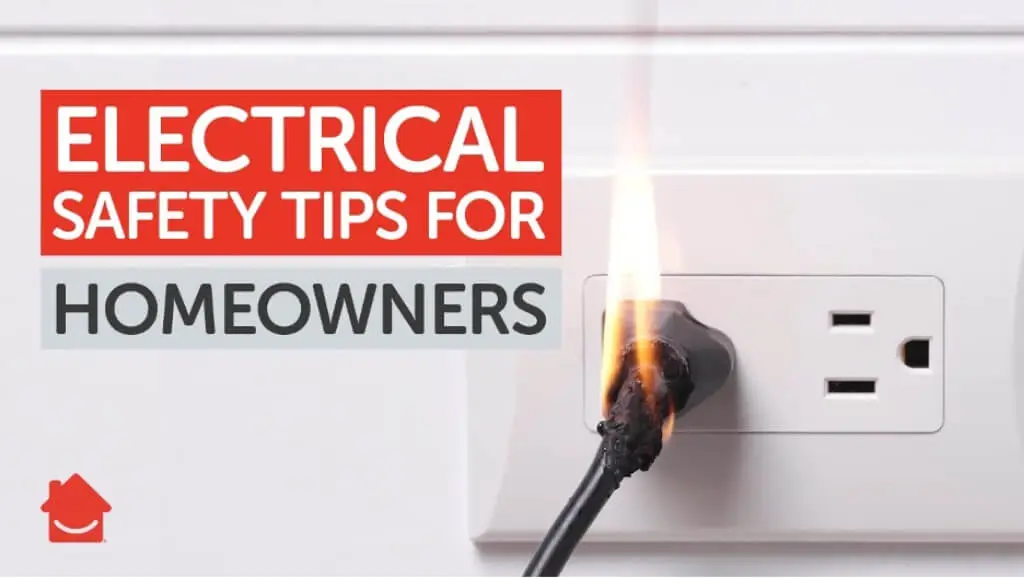
Extension cords, while immensely useful for bridging gaps between electrical outlets and your devices, come with their own set of safety considerations. Here are some essential tips to ensure their safe use:
- Before Use:
- Inspection: Always inspect cords for any signs of damage, such as frayed wires, cracked casing, or exposed wiring. Check for signs of overheating such as if the extension cord is hot to the touch, which could indicate overloading or a faulty connection. Discard any cord that shows signs of wear and make sure you did not use hot extension cord.
- Testing Approval: Use only those extension cords that have been tested and approved by independent testing laboratories like Underwriters Laboratory (UL).
- Correct Rating: Ensure the cord is appropriately rated for the device’s power requirements. This includes matching the wattage and amperage of the device with the extension cord’s capacity.
- During Use:
- Water and Snow: Keep cords away from water and snow. Never use an extension cord in wet conditions unless it’s specifically rated for such use.
- Grounding: Do not remove the ground prong from a three-pronged cord. This ground prong is a critical safety feature.
- Indoor vs. Outdoor: Be mindful of the cord’s rating for indoor or outdoor use. Never use an indoor-rated cord outside.
- Avoid Overloading: Do not plug multiple high-power devices into the same extension cord. This can lead to overheating and potentially cause a fire.
- Placement: Avoid running cords under carpets, through doorways, or anywhere they can be tripped over or pinched.
- After Use:
- Storage: Unplug the extension cord when not in use, neatly coil it, and store indoors to prevent damage from environmental elements.
- Child Safety: Keep stored cords out of reach of children to prevent misuse.
- Regular Checks: Periodically re-inspect stored cords for damage before use, even if they have been stored properly.
By adhering to these guidelines, homeowners can significantly mitigate the risks associated with extension cord use, ensuring a safer home environment. Remember, extension cords are intended as a temporary solution and should not replace permanent electrical wiring.
Conclusion
Through the exploration of extension cord safety, the article has underscored the significant risks that come with improper use, such as overheating and electrical fires, and spotlighted specific appliances and devices that should be avoided.
By adhering to guidelines on the selection and use of extension cords, homeowners can substantially mitigate these risks. Whether it’s selecting the correct rating and specification for intended use or understanding the limitations of extension cords for long-term power solutions, these practices ensure a safer living environment. Moreover, alternatives like direct wall outlet connections and the installation of additional power outlets have been highlighted as safer, more permanent solutions to relying on extension cords.
In essence, informed practices and awareness are pivotal in preventing the misuse of extension cords. The article not only provided a comprehensive list of do’s and don’ts but also suggested safer alternatives and general safety tips to uphold electrical safety standards within the home.
Remember, the path to ensuring a secure home environment begins with acknowledging the potential dangers of convenience-driven choices like extension cords. By taking steps toward informed usage and embracing the alternatives offered, we can protect our homes and loved ones from the hazards of electrical mishaps.
